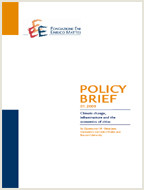Russia-Ukraine-Europe gas crisis of January 2009: Causes, Lessons Learned and Strategies for Europe
In January 2009, Europe experienced the worst gas crisis in its history. Following a dispute over the gas price between Russia and the Ukraine, all Russian gas flows via Ukraine were completely interrupted for two weeks, each side blaming the other. As the Ukraine transit route represents some 80% of all Russian gas exports to Europe, this shortfall was equivalent to about one third of European daily gas imports and one fifth of European daily gas demand. Some 18 European countries were heavily affected by this unprecedented supply shortfall. The situation was particularly dramatic in the Balkan countries which experienced a humanitarian emergency as part of the population could no longer heat their homes during some particularly cold winter days. Central European countries also felt an economic impact as gas deliveries to some industrial consumers had to be shut down. Most western European countries overcame the crisis without any physical delivery interruptions to their customers, thanks to large gas storage availabilities at that time and good interconnections to other gas sources. This crisis will have lasting consequences. Both Russia’s reputation as a reliable supplier and Ukraine’s reputation of a reliable transit country are seriously damaged. Efforts to diversify gas sources, gas routes and energy sources will intensify. In what follows, we outline briefly the history, causes and impacts of the crisis , the lessons learned and possible future strategies for Europe.

